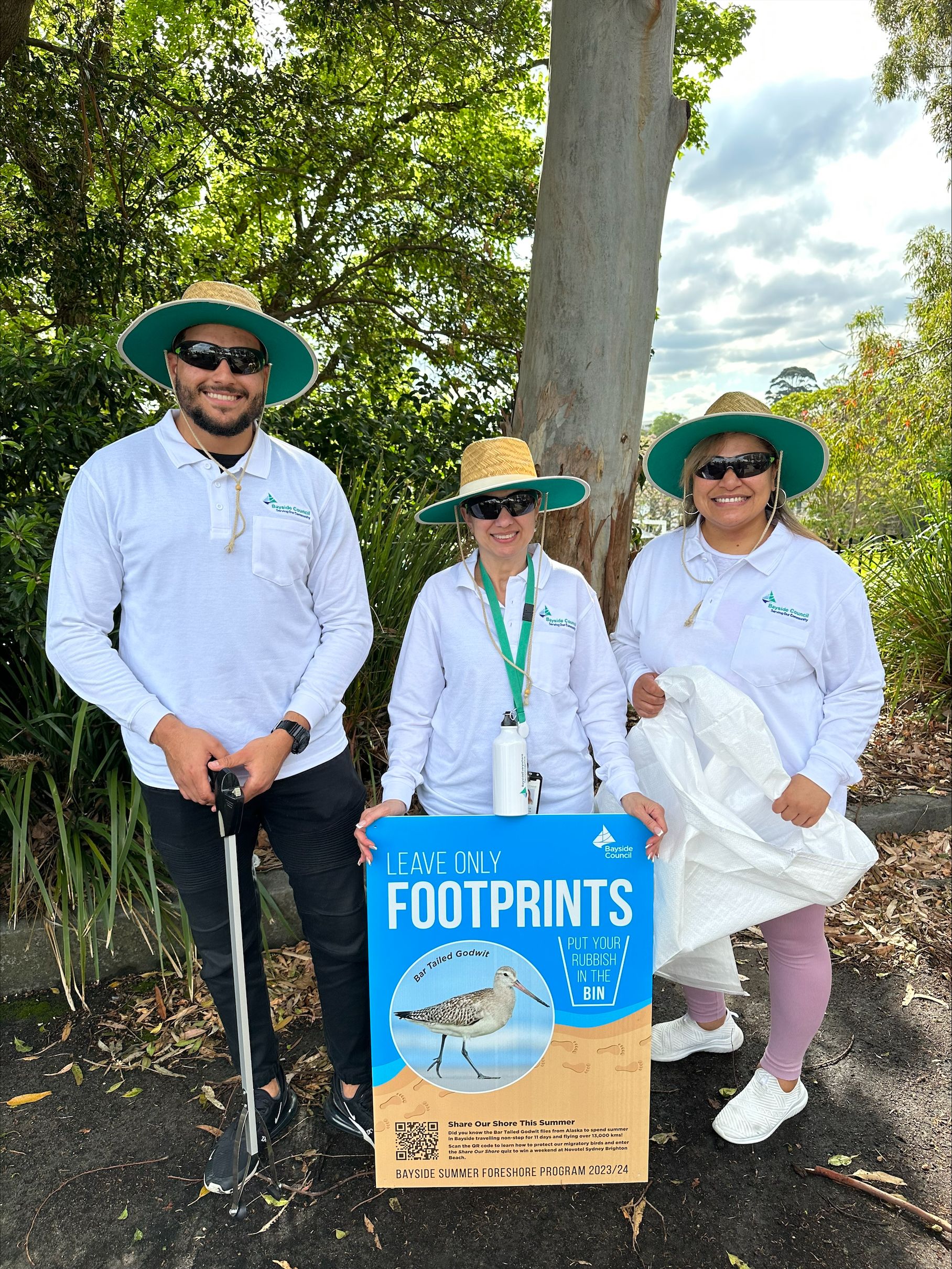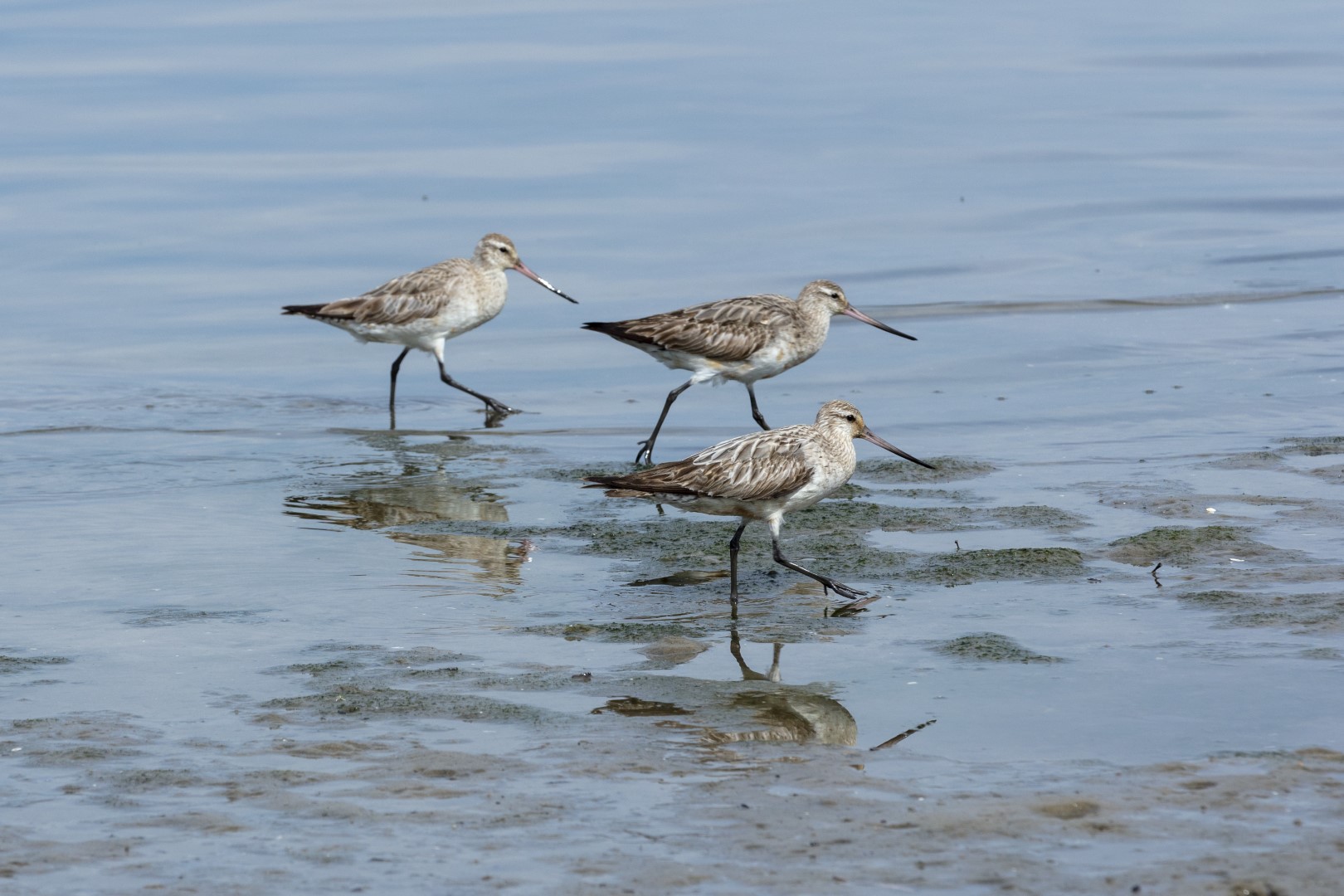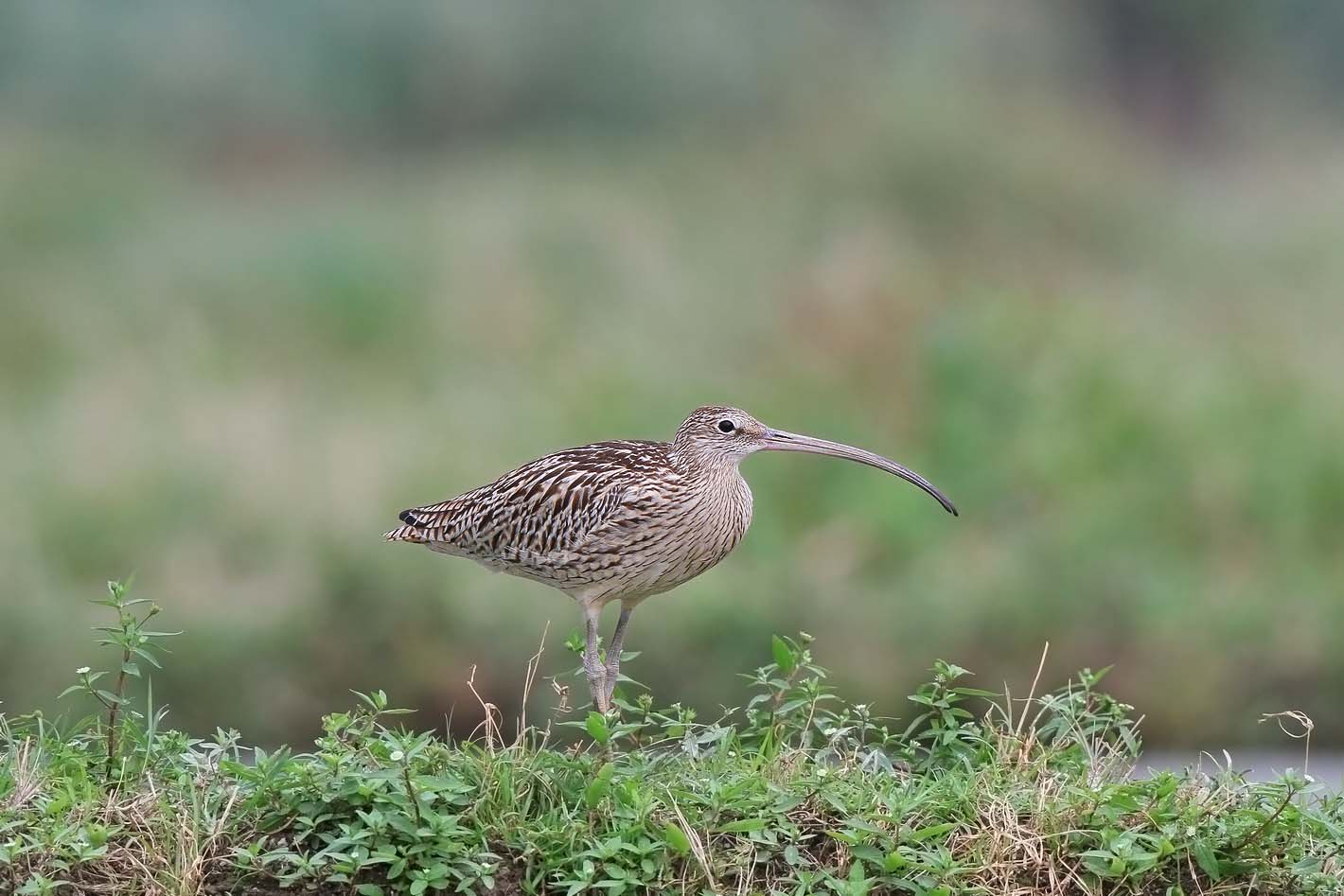
Keeping our beaches clean
Waste collection
Waste management is one of the biggest challenges we face over the summer.
Our dedicated waste team maintains the cleanliness of our foreshore by conducting regular patrols along the 8 kilometre foreshore, and collecting litter to ensure a clean and secure environment for recreational use.
Our beachside bins are emptied daily over summer, and emptied in the morning and afternoon on weekends and public holidays.
Our beachside facilities are cleaned twice daily, with additional cleaning sessions added during the peak summer period on weekends and public holidays.
Waste education is an integral part of the Summer Foreshore Program, but the most effective waste management starts with everyone. We encourage all foreshore visitors to "Leave Only Footprints" on our beaches, and to responsibly dispose of rubbish in the bins provided or take it with them. Your cooperation plays a crucial role in preserving the beauty of our foreshore.
Smoking, no thanks
Smoking is strictly prohibited on our beaches and foreshore. This includes cigarettes, e-cigarettes, vaping, and shisha. Violations will result in fines.
Cigarette butts are composed of plastic and release harmful toxins into our environment, so choosing not to smoke benefits everyone, including our marine life.
We appreciate your cooperation in refraining from smoking. Thank you for not smoking.
Daily beach rake
Our Beach Rake team work around tidal flows to clean washed up debris, and removing a lot of rubbish left on our beaches by visitors.
Put your rubbish in a bin or take it with you, remember to Leave Only Footprints.
Protecting our environment
Bayside shorebirds
This summer, our primary focus is on the conservation of our migrating shorebirds.
Protecting these migratory species and preserving their habitats is important for the overall well being of our planet.
We can all contribute to the protection of our shorebirds by properly disposing of our waste, and not polluting their environment.
Our Summer Foreshore Program mascot, the Bar Tailed Godwit flies nonstop for 11 days and travels over 13,000 kms from Alaska to spend summer on the foreshore of Botany Bay.
Meet a Bayside Beach Buddy
Our roving Bayside Beach Buddies are ready to lend a helping hand throughout summer, providing information to visitors and encouraging them to Leave Only Footprints.
Working alongside our Rangers, and waste teams, they are equipped to provide essential waste education and helpful hints on how to dispose of your waste responsibly.

Working with business
Summer wouldn’t be the same without our great local businesses along the foreshore! They are ready to serve you.
We are working closely with businesses to promote the Leave Only Footprints campaign.
Remember to dispose of your empty food containers, drink bottles, and coffee cups when you buy take away from local businesses. Keeping our beaches rubbish free helps avoid damaging our environment and marine life.
Share Our Shore Competition
Enter the "Share Our Shore" competition for a chance to win a weekend at the Novotel Sydney Brighton Beach.
Simply read about our shore birds below, then answer a quick question and you could win!
Bar-tailed Godwit
The longest non-stop flight in the world belongs to the Bar-tailed Godwit. This bird can fly 13,500km from Alaska to Australia in 11 days, without resting or eating. It has an average speed of over 50km/h and weighs only about 400 grams. It loses half of its body weight during the journey.
To survive this feat, the Bar-tailed Godwit needs to feed constantly when it arrives in Australia, to gain enough strength for the return trip to the Arctic, where it breeds. The Bar-tailed Godwit inhabits estuarine mudflats, beaches and mangroves in Australia.
It uses its long bill to search for molluscs, worms and aquatic insects in the sand and mud. It is important not to disturb it when it is feeding, as it may not be able to replenish its energy reserves for the next flight.
The Bar-tailed Godwit does not breed in Australia, it migrates south in September to escape the Arctic winter and spends the summer in Australia to prepare for the flight back to the Arctic in April. In the Arctic, it has a short breeding season, during which it builds nests, lays eggs and raises chicks.

Far Eastern Curlew
Far Eastern Curlews are the largest shorebirds in the world. The average size is 63cm and the average weight is 900 grams. They have long necks and legs and very long down-curved bills almost 20cm long which they use to dig up crabs, their main food source in Australia. The Curlew gets its name from its call, a long lonely ‘Cuuuurrlew’, ringing out across coastal wetlands.
The Far Eastern Curlew flies 30,000km each year flying back and forth to Australia from the Arctic. It is sometimes called the Moon Bird because if it lasts its 20-year lifespan it would have flown the distance between the earth and the moon.
Most of the Curlews in the world spend the summer in Australia so we have a special duty to look after them and make sure we preserve their habitat.
